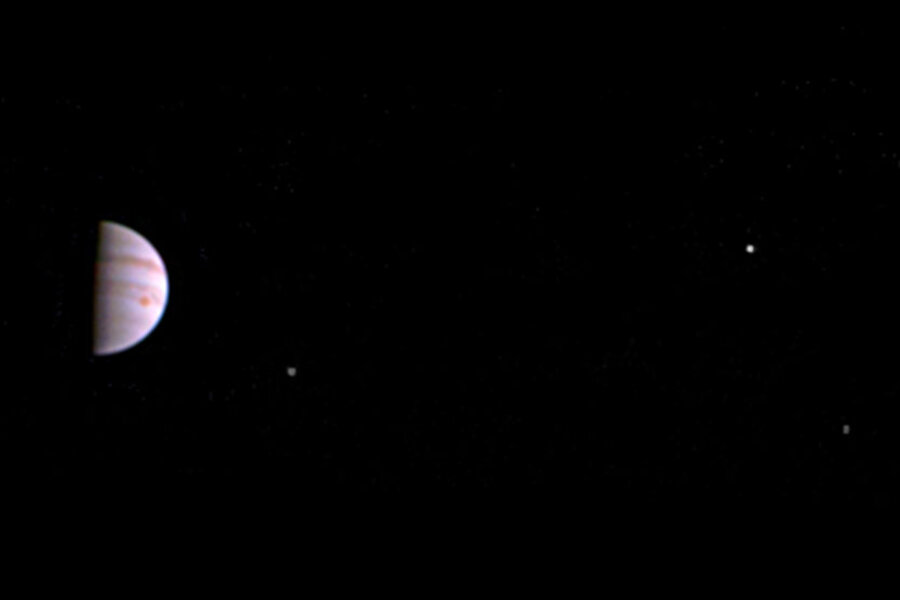NASA's Jupiter probe: Juno makes closest approach
After nearly two months of orbiting Jupiter, NASA’s space explorer Juno will finally sidle up to the gas giant on Saturday around 8:51 a.m. Eastern time. It will edge the closest that it will get to the planet during its current mission, approaching at 2,600 miles above Jupiter's roiling clouds while traveling 130,000 miles per hour.
Juno will have all of its eight science instruments turned on for exploration for the first time since the spacecraft arrived at Jupiter on July 4. While that data will not be available for some time, the spacecraft’s camera, JunoCam, will be snapping photos that will be released late next week, says NASA.
These will include the highest resolution images of the Jovian atmosphere and the first images of Jupiter's north and south poles.
"This is our first opportunity to really take a close-up look at the king of our solar system and begin to figure out how he works," Scott Bolton, a principal investigator for Juno, from the Southwest Research Institute in San Antonio, said in an announcement.
Juno is named after the insightful wife of the Roman god Jupiter. It traveled for five years and more than a billion miles through our solar system to get to its destination last month. Now it can look for answers to astronomers' many questions about the most massive planet in our celestial neighborhood. Scientists are trying to determine how much water is on the giant planet, whether it has a dense core below its layers of gas, and why the giant hurricane-like storm that’s been raging on the planet for centuries is shrinking.
"No other spacecraft has ever orbited Jupiter this closely, or over the poles in this fashion," Steve Levin, Juno project scientist from NASA's Jet Propulsion Laboratory in Pasadena, Calif., said in an announcement. "There are bound to be surprises."
The size of a sport utility vehicle, Juno is the first spacecraft to venture this far into space using only solar power. Its three tractor-trailer-size, sunlight-gathering wings resemble the blades of a windmill.
Because Jupiter is so far from the sun, previous spacecraft relied on nuclear power to travel to its neighborhood.
Throughout the mission, the public can vote on where to point JunoCam and watch Juno's orbit in real-time through a downloadable app from NASA.






